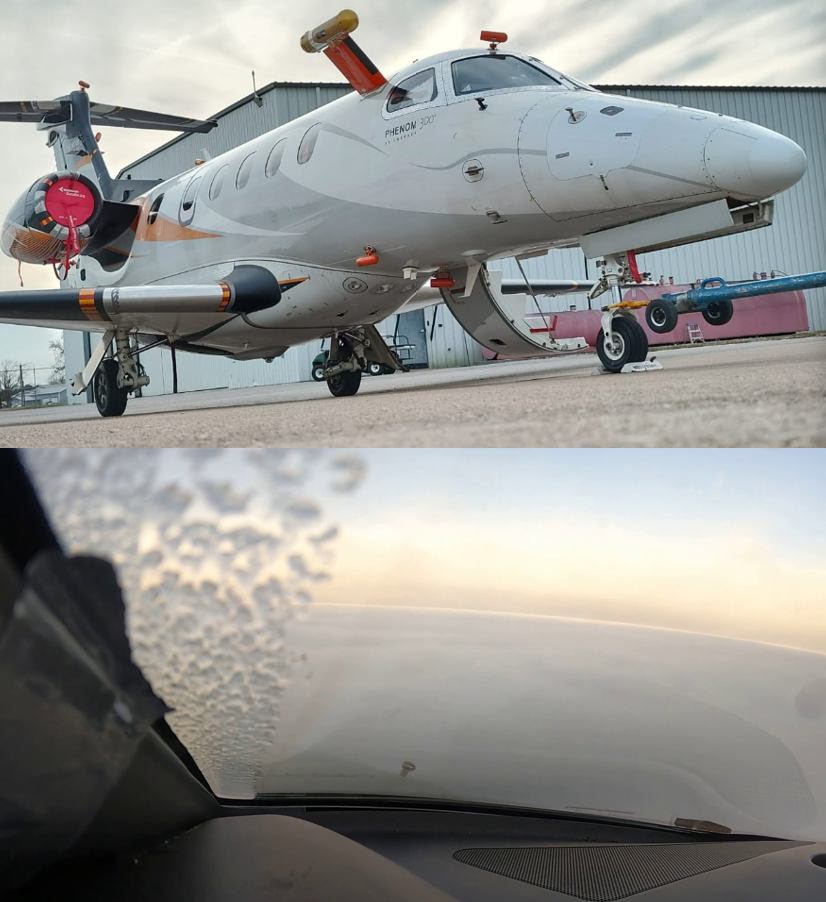09/03/23
International Supercooled Water Droplets Flight Campaign in North America

An international team including Embraer, Safran, Collins Aerospace, Honeywell International, AeroTex and German Aerospace Center (DLR) is conducting a flight campaign aiming at natural supercooled large droplet (SLD) icing conditions.
This is part of the EU-funded project SENS4ICE (SENSors and certifiable hybrid architectures for safer aviation in ICing Environment). In the five-year project, 10 different technologies are developed in parallel to detect SLD icing conditions to improve aviation safety, either aiming to detect ice accretion on the aircraft or relevant atmospheric icing conditions. In the first project phase, the detection technologies were tested in several icing wind tunnels particularly in SLD conditions. Four of these technologies are now tested in a flight campaign with an Embraer Phenom 300 aircraft in the USA in late February / early March 2023.
Furthermore, a hybrid ice detection system is developed by Safran, combining different detection technologies. This is including an indirect ice detection algorithm based on online aircraft performance evaluation developed by DLR. Numerous airborne reference instruments for atmosphere characterisation provide a detailed baseline to assess the different ice detection technologies.
Technology testing in natural in-flight icing conditions will allow to increase the Technology Readiness Level (TRL) for the technologies and to pave the way towards industrialisation and operational application and also to support future aircraft certification activities. Several flights in natural liquid water icing conditions have already been successfully conducted. Preliminary results suggest that the different icing detection technologies have been able to detect relevant conditions.
DLR is leading the European Union SENS4ICE research and innovation project and working with 16 international research institutions and commercial organisations to investigate SLD icing. The project is overseen by an advisory board involving the European Aviation Safety Agency (EASA), the US Federal Aviation Administration (FAA) and other international bodies. The project is funded as part of the European Union's research framework programme Horizon 2020, under grant number 824253.
